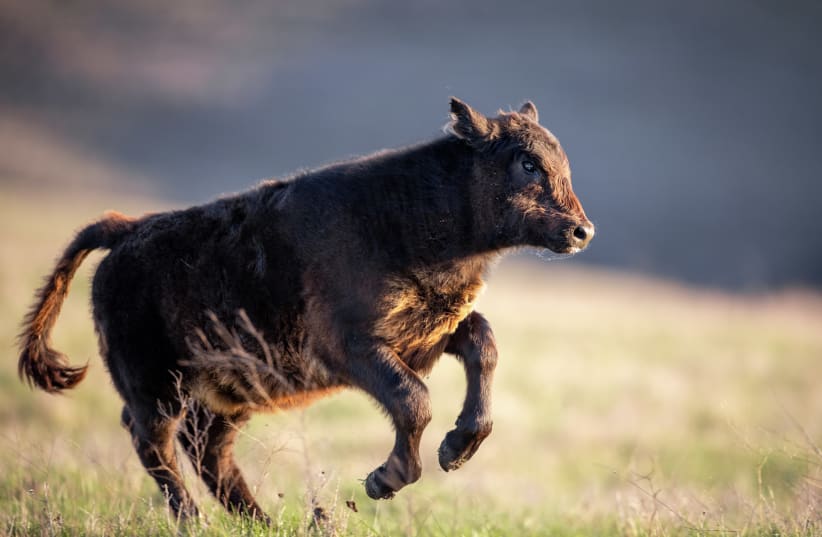Are animals friends or food? Or do we just not care at all? A new study has shed light on why we as a species see certain animals in different ways.
The findings of this study, published in the peer-reviewed academic journal Human-Animal Interactions, sheds light on why some animals are seen as being "food" and therefore lacking in rights due to being a commodity, rather than other animals.
No monkey business here. Let's take a deep dive into our own human biases and perceptions for different animals, whether we love them, hate them or eat them.
What do we want? A food worth fighting for! How human perception and biases impact how we see animals
The Singaporean study attempted to ask the question of how our perceptions of animals are shaped.
Humans throughout history have interacted with a wide variety of animals. Some we coexist with, some we adopt as domesticated companions, some we hold with disdain and others we see as food.


Understanding why this happens is part of a growing field of study known as anthrozoology, and research on this front has noted some interesting observations about human perceptions.
For example, take human perception of livestock animals like cows and chickens. These animals are among the most "used" living commodities in the world, existing in massive farms and used for their meat.
As such, some researchers have noted that these "food" animals are often portrayed as being less sentient and often have less rights or moral protections.
Compare this to dogs and cats. These are two of the most beloved types of household pets around the world and are greatly beloved by their humans. Their lives, health and happiness are usually of great concern to their human companions, who name them, take care of them and show them love and affection.
So how are different animals viewed?
To understand this, the researchers, led by Dr. Paul Patinadan, decided to analyze the perceptions held for 16 different animals, chosen from prior research on compassion and animal studies.
These animals were as follows:
- Tiger
- Dolphin
- Dog
- Horse
- Orangutan
- Cow
- Pig
- Chicken
- Lamb
- Tuna
- Prawn
- Octopus
- Aligator
- Rabbit
- Shark
- Frog
To analyze this, the researchers gathered a group of participants and gave them a survey with four sections: Animal stereotype survey, participant demographics, moral obligation survey and ethics position questionnaire.
For the animal stereotypes, the participants were given the list of 16 animals and asked to rate each animal on a scale of 1 to 5 on 10 different traits, referring to how warm (pleasant, nice, likable) and how competent (smart, capable, active) these animals were. The idea was that these ratings could help inform the "social value" the participants saw these animals as having.
The ethics questionnaire saw typical questions about human ethics, but replacing the words "human" or "person" with "being," so it could apply to all living beings as opposed to just animals.
The goal of this was to put each participant into one of four ethical positions: Absolutist, subjectivist, situationist and exceptionist.
So what did the results say?
Overall, most participants tended to view some animals the same way, with minor differences.
For example, some animals were seen as being warmer, such as dogs, orangutans and horses. Other animals were seen less warmly such as the prawns, tuna and frogs.
In terms of competence, animals like alligators, tigers and dogs were seen as being competent and intelligent, while animals like chickens, lambs and pigs were seen as being less competent.
There were some differences on people who were deemed "absolutists," which consisted mostly of vegetarians and activists, and people who were deemed "neutral." For example, absolutist participants rated chickens as being less competent, horses as slightly more competent and pigs as slightly warmer.
By contrast, neutral participants saw alligators as being slightly warmer, chickens as slightly more competent and pigs as less warm.
Either way, these differences were very minor, and any of the participants' ethical ideologies didn't really make much of a difference.
In other words, even though the participants were from a very diverse group ranging an ideological spectrum, the results were still incredibly similar.
To illustrate just how similar these ratings were, the researchers grouped the 16 animals into four clusters based on the results.
With the exception of chickens, the clusters had exactly the same makeup between absolutist and neutral participants.
The reasons for these results might come from something other than ideology, such as emotions or overall perceptions.
For example, dogs and orangutans were ranked very highly as being warm and competent, which is fair.
Livestock animals like cows, lambs and pigs tended to be on the warmer side of the spectrum but not on the competent side, which, the study argues, could be indicative of pity.
Then animals like alligators and octopi might be seen as competent due to their intelligence and skills as predators, but they aren't seen as warm, so they might be seen as more "intriguing" rather than something to love or pity.
And then there are the animals seen as not being warm or competent, which in this study's case would be tuna, frogs and prawns. Here, the result could best be described as apathy.
Of course, there is the possibility of the sample being an issue. While the participants were diverse in ideology, they all still were taken from the local area in Southeast Asia. As such, there is the chance that views regarding these animals could have been colored by their local background or religious beliefs.
For example, orangutans may not have rated as positively in a study conducted in, for example, the US, as they did in Singapore.
But regardless, there is still plenty of room for further study on what exactly influences human biases and perceptions regarding different animals.
